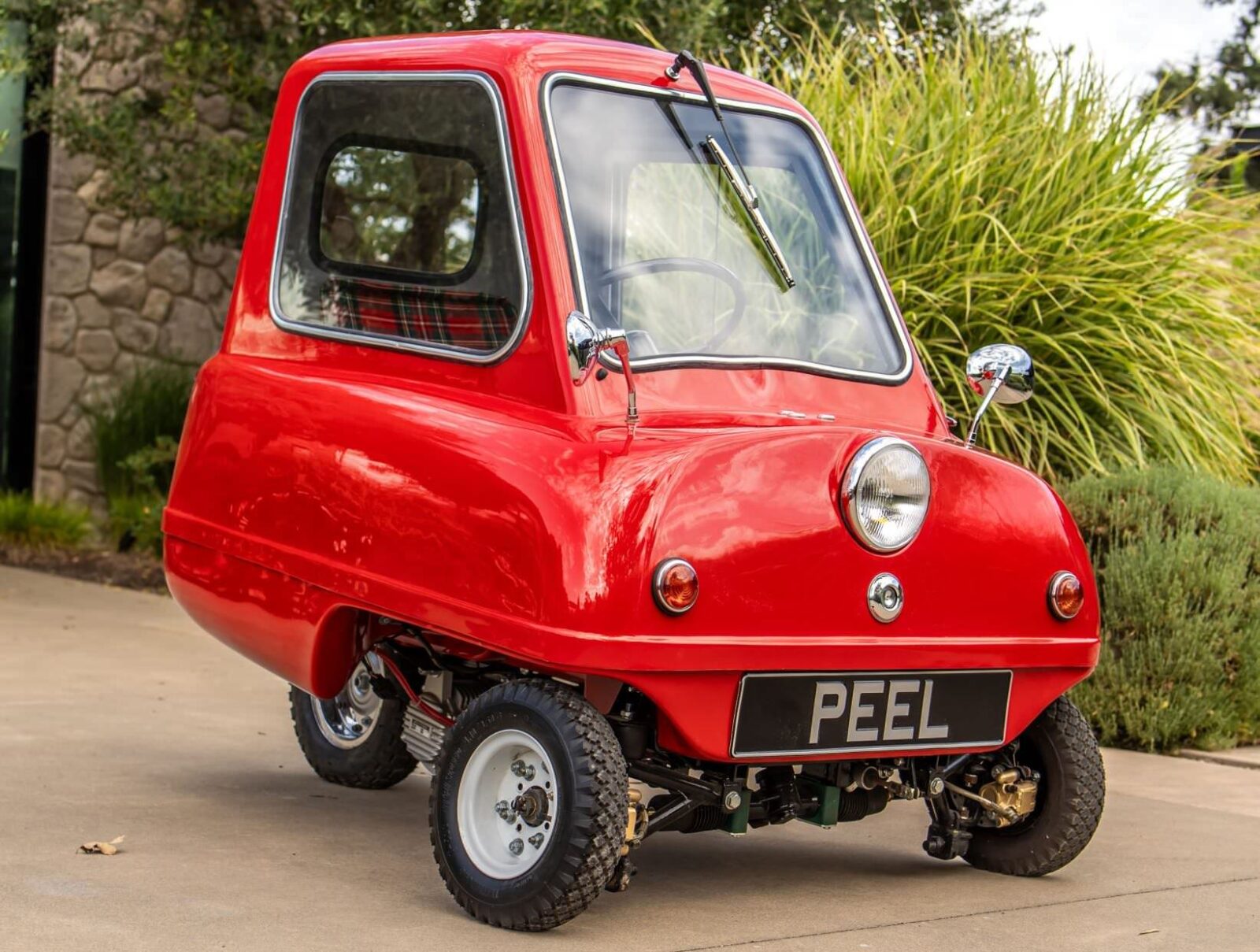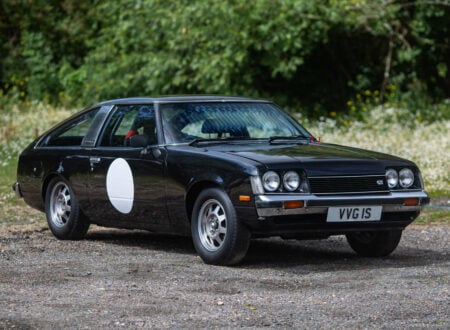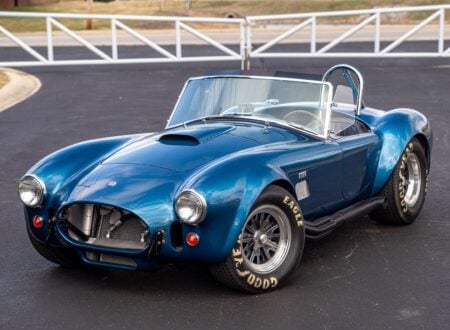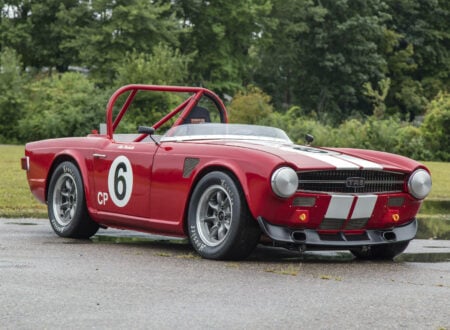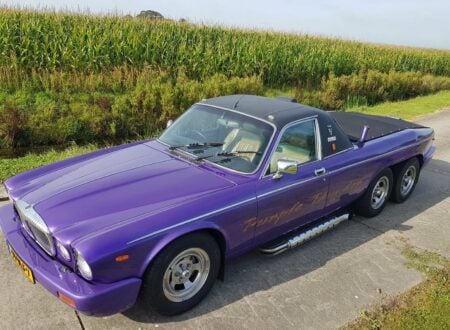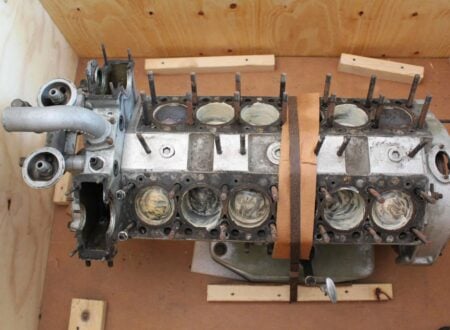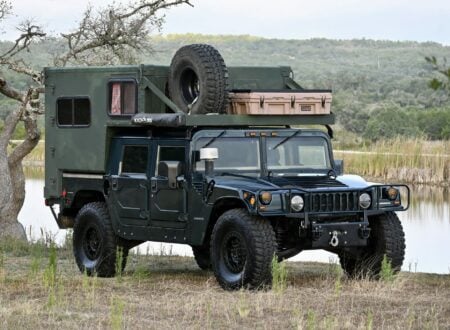This is the 100% electric Peel P50, it’s a modern version of the P50 microcar that debuted in 1962, and it still holds the Guinness Book of World Records title as the smallest production car ever made.
The Peel P50 became famous when Jeremy Clarkson drove one indoors around the BBC’s Television Centre during a 2007 episode of Top Gear. This helped reinvigorate interest in the model and the company was restarted in 2010 to put the car back into limited production.
Fast Facts – The Electric Peel P50
- The Peel P50 was developed and manufactured by the Peel Engineering Company, located on the Isle of Man. The company had been involved in fiberglass production, and decided to venture into fiberglass microcar manufacturing. The P50 was introduced at the 1962 Earls Court Motorcycle Show in London. It was a compact, inexpensive, and economical vehicle designed for city commuting.
- The Peel P50 holds the Guinness World Record as the smallest production car ever made, measuring just 54 inches long and 39 inches wide. It featured a single door on its left side, a single windshield wiper, and no reverse gear. The car was powered by a 49cc DKW engine, producing just 4.2 bhp, giving it a top speed of 37 mph and fuel consumption of over 100 mpg.
- Production numbers of the Peel P50 were low due to somewhat limited demand. From 1962 to 1965, only 47 were made, making it a rare collector’s item today with values extending well into the six figures for original examples.
- In 2010 Peel Engineering Ltd. restarted production in England, after a successful appearance on the TV show “Dragons’ Den,” which led to £80,000 in funding. The company now produces both petrol and electric versions of the Peel P50 with sales in the UK, Europe, and the USA.
The Smallest Production Car Ever Made
In Europe and Britain during the years shortly after WWII there was intense demand for cars and motorcycles at the lower end of the market, with prices people could afford and running costs that wouldn’t break the bank. This led to a surge in the production of Vespa and Lambretta scooters, small-capacity motorcycles, and microcars like the Messerschmitt KR200, Iso Isetta, Heinkel Kabine, and of course, the Peel P50.
Above Video: This is the now-famous Top Gear clip from 2007 where presenter Jeremy Clarkson takes a Peel P50 on a drive into (and around) the BBC’s Television Centre.
Of all the microcars that would enter full series production, the Peel P50 was the smallest. It measured in at just 54 inches (137 cm) long and 39 inches (99 cm) wide, with a curb weight of 130 lbs or 59 kgs. It was so small and light that it didn’t even have a reverse gear, the driver would simply get out and use the rear pull handle to move the car into the desired parking space.
The P50 arrived towards the end of the microcar boom, it was first shown to the world at the 1962 Earls Court Motorcycle Show in London where it attracted large crowds and much interest. The idea of a car being manufactured on the Isle of Man seemed strange to many, but demand was such that orders began to roll in, and completed cars began to roll out of the factory later the same year.
The Peel P50
The P50 was designed by Cyril Cannell as a highly-economical car that could accommodate “one adult and a shopping bag.” It was built with a fiberglass monocoque body, the body itself was a load-bearing structure and the car had no separate chassis.
The engine and rear wheel were fitted to the rear of the P50 as a single unit, with two separate wheels up front on independent suspension with rack and pinion steering. Power was provided by a single-cylinder, air-cooled DKW 49cc motor with a 3-speed manual transmission with no reverse – instead the car had a handle on the rear that the driver could use to physically move the lightweight car into the desired parking space.
As you might expect, that 49cc DKW unit isn’t particularly powerful, producing just 4.2 bhp giving the P50 a top speed of approximately 37 mph (59 km/h). Though this isn’t fast, it’s plenty for around-town use, grocery trips, and running local errands – which is exactly what it was designed for.
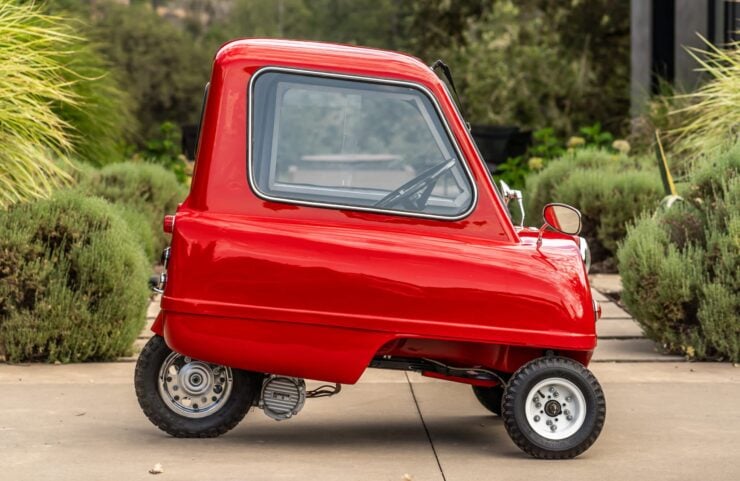

Inside the P50 the interior is both minimalist and lightweight, with a single seat consisting of fabric stretched over a metal frame, a steering wheel, shifter, and pedals. The vehicle makes do with a single headlight, a single windscreen wiper, and a single door located on the lefthand side.
The Beginning, The End, And A New Beginning
There was some demand for the Peel P50 when it entered production in 1962 with a price of £299. This works out to the equivalent of £5,320 in 2023 when adjusted for inflation.
The price point was well below that of a normal car, but buyers could also get their hands on a motorcycle with a sidecar for similar money – and this would give them the ability to transport up to three people, albeit without any weather protection.
Production of the P50 ran from 1962 until 1965, 47 were made in total (not including prototypes), and it’s believed that fewer than 30 remain today. In the decades since production ceased something rather interesting has happened with the story of the little microcar from the Isle of Man, it became desirable.
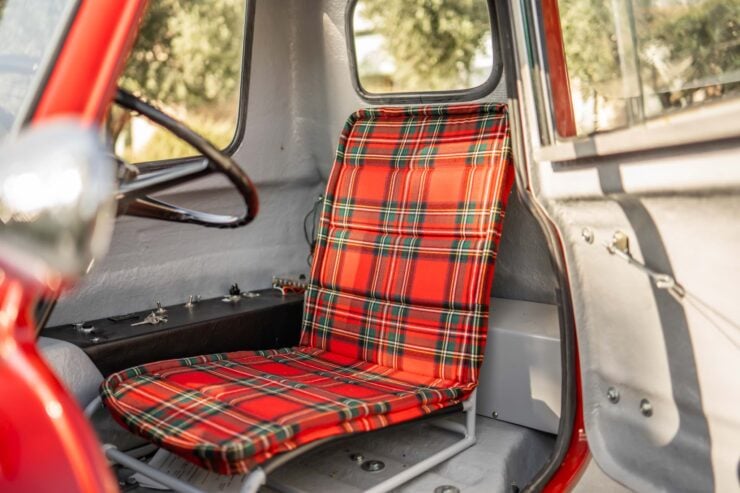

It became so desirable in fact that prices on original 1960s-era P50s has skyrocketed from the original MSRP of £299, past the modern equivalent of £5,320, all the way up to over £80,000 ($120,000 USD). This was the price achieved by a genuine 1964 Peel P50 at the Bruce Weiner RM Sotheby’s auction in February of 2013.
The 2017 Electric Peel P50 Shown Here
The Peel P50 you see here may look indistinguishable from the originals built on the Isle of Man in the 1960s, but it was actually made in 2017. And unlike the originals, it has a 100% electric drivetrain.
Peel Engineering Ltd. restarted production in 2010, now based in England, after a successful appearance on the TV show Dragons’ Den, successfully seeking £80,000 in funding for the project. The company now manufactures both petrol and electric versions of the modern Peel P50 with sales in the UK, Europe, and the USA.
The electric version of the P50 is powered by a 48-volt direct-drive electric motor connected to four 12 volt batteries which are located in the cabin. The batteries are rechargeable of course, and the car has a top speed of approximately 25 mph or 40 km/h.
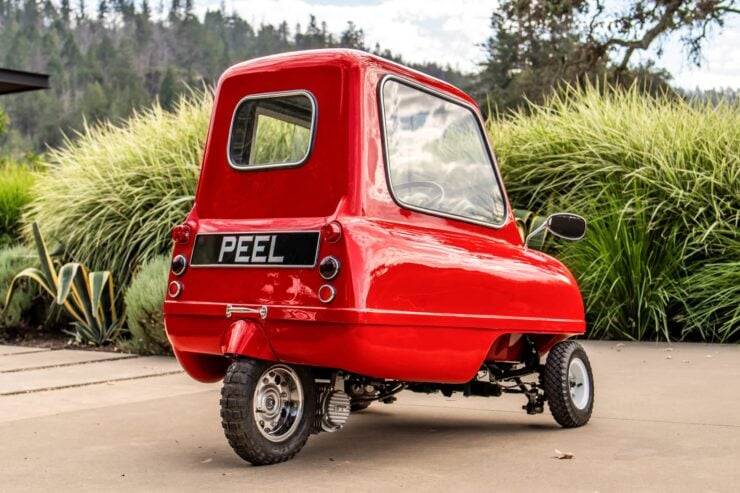

The example you see here is currently located in Healdsburg, California and it’s being offered for sale on Bring a Trailer. It’s finished in Red over a plaid cloth upholstered seat, and it has a clean Montana title in the name of the seller’s LLC.
If you’d like to read more about this unusual electric microcar or register to bid you can visit the listing here.
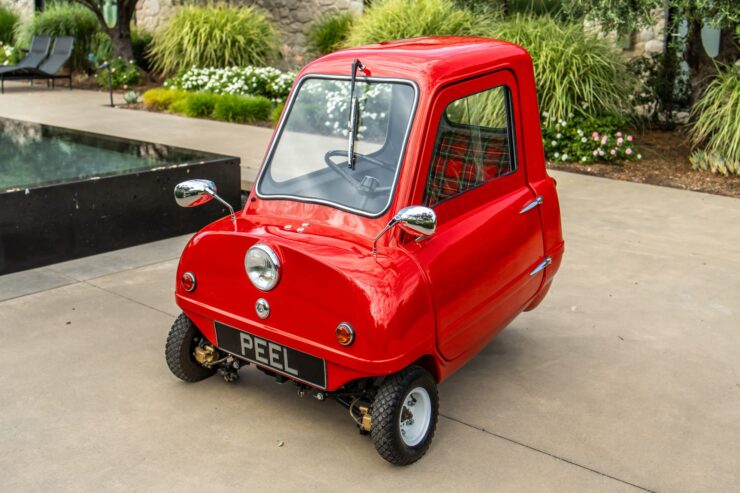
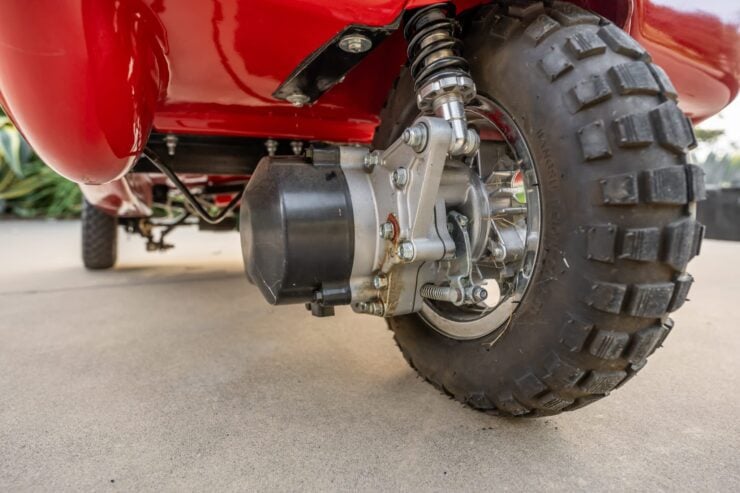
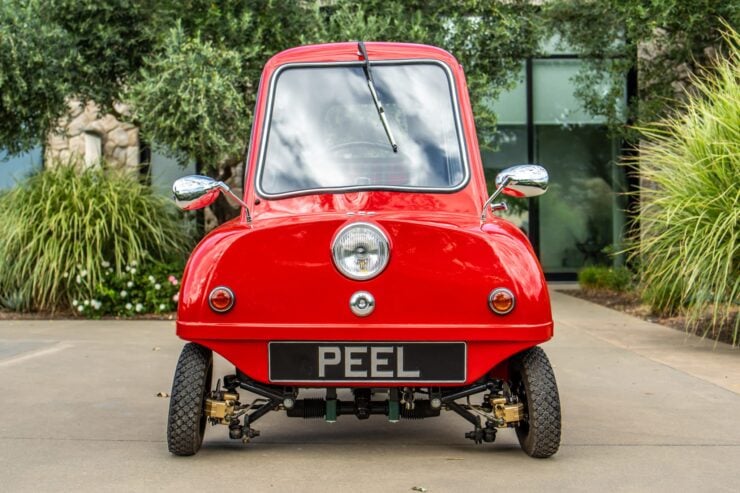
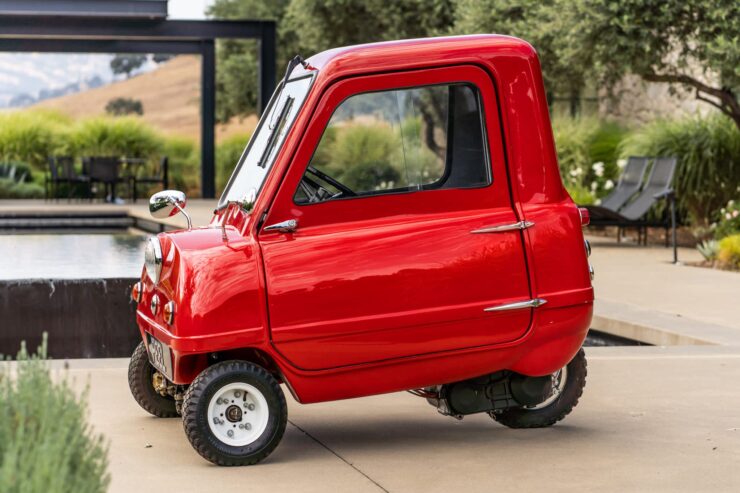
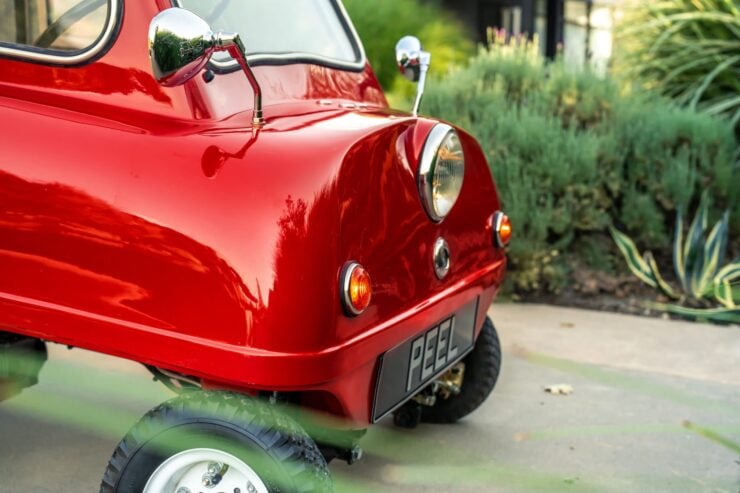
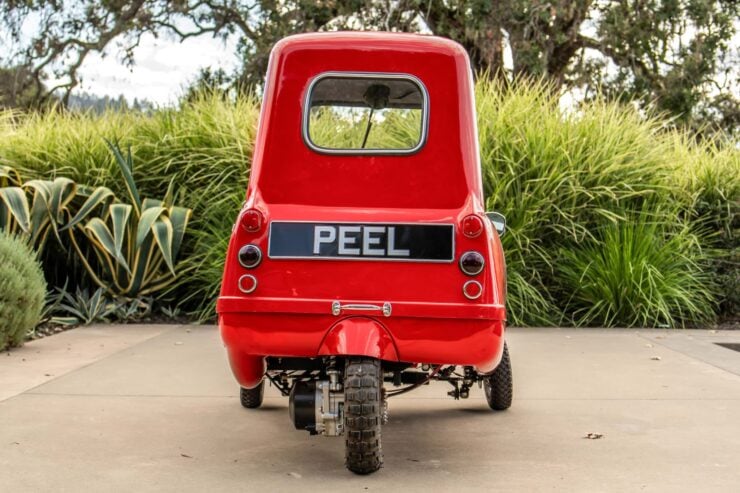
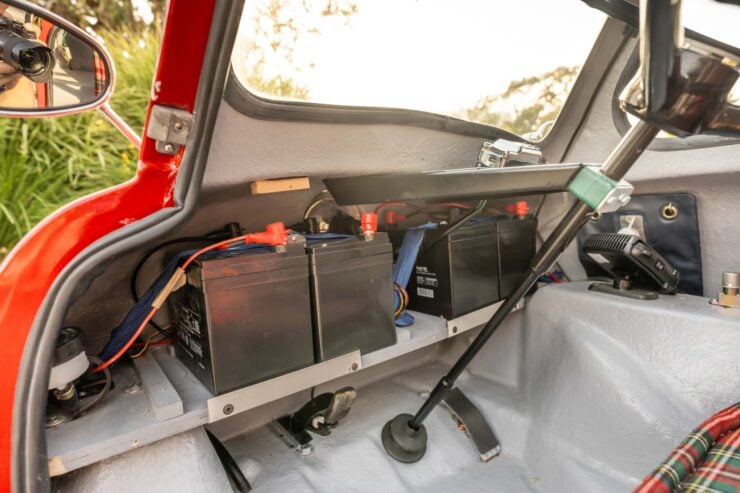
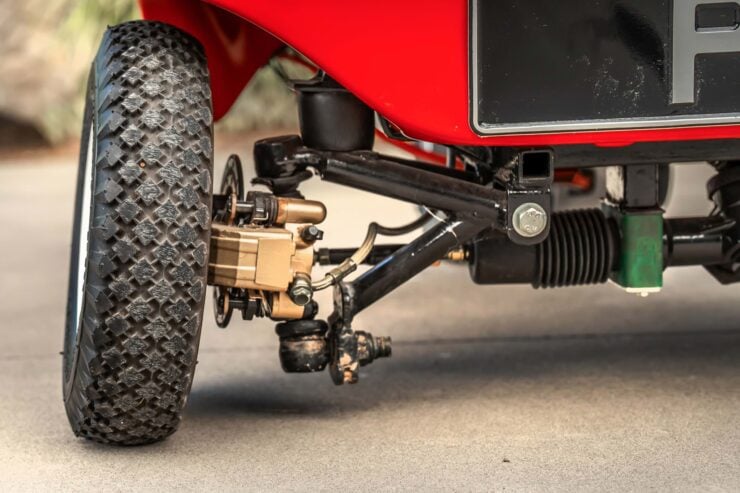
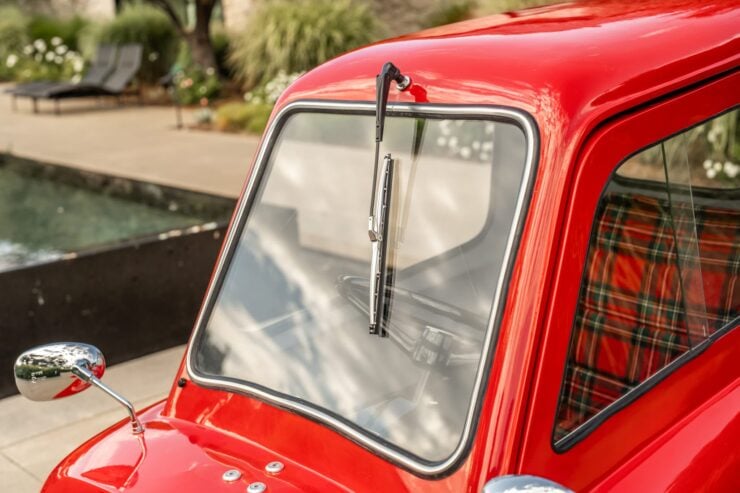
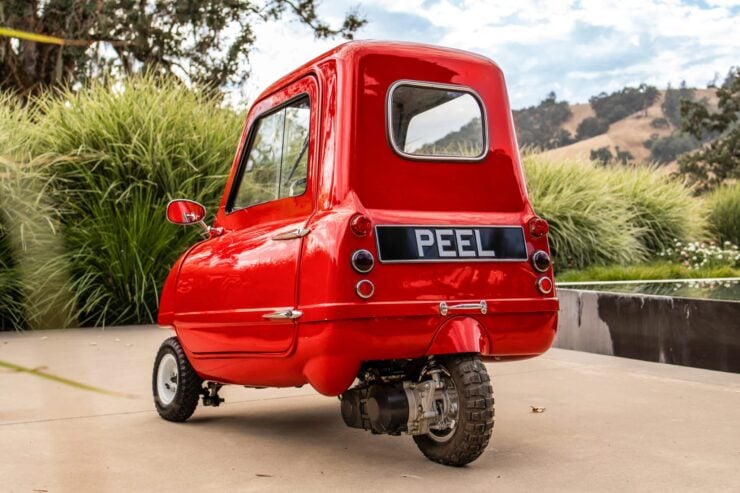
Images courtesy of Bring a Trailer

Articles that Ben has written have been covered on CNN, Popular Mechanics, Smithsonian Magazine, Road & Track Magazine, the official Pinterest blog, the official eBay Motors blog, BuzzFeed, Autoweek Magazine, Wired Magazine, Autoblog, Gear Patrol, Jalopnik, The Verge, and many more.
Silodrome was founded by Ben back in 2010, in the years since the site has grown to become a world leader in the alternative and vintage motoring sector, with well over a million monthly readers from around the world and many hundreds of thousands of followers on social media.

